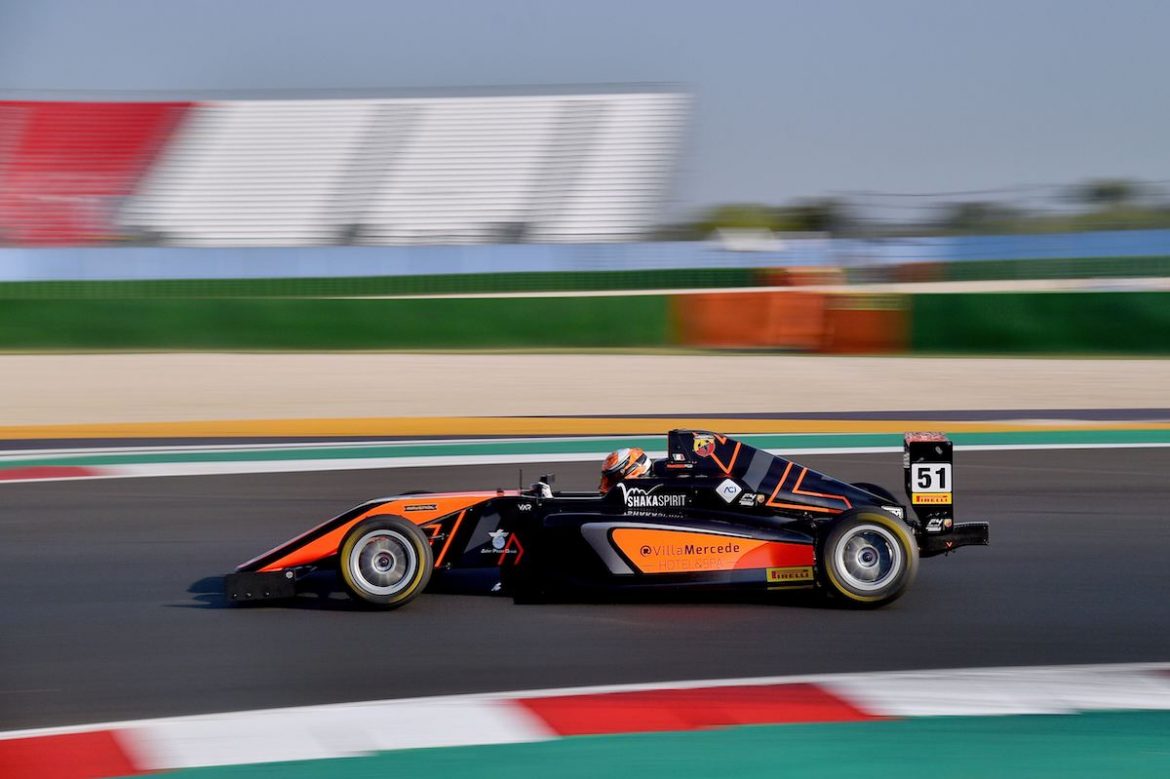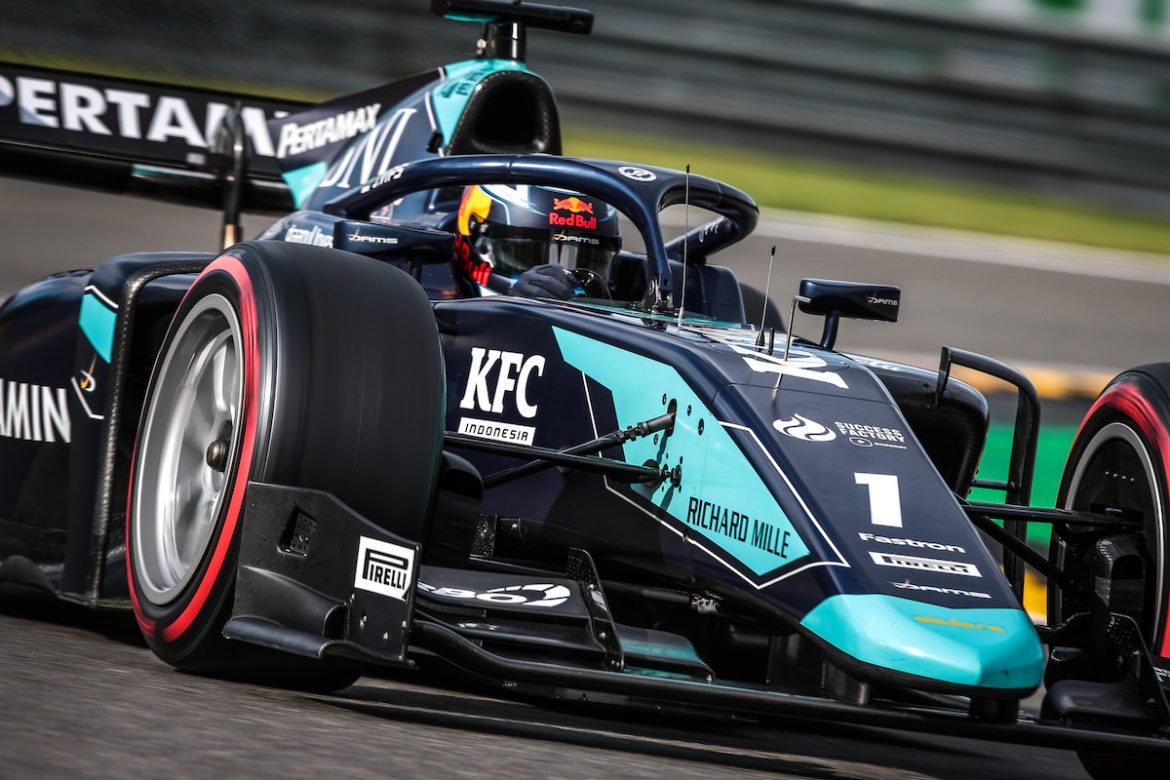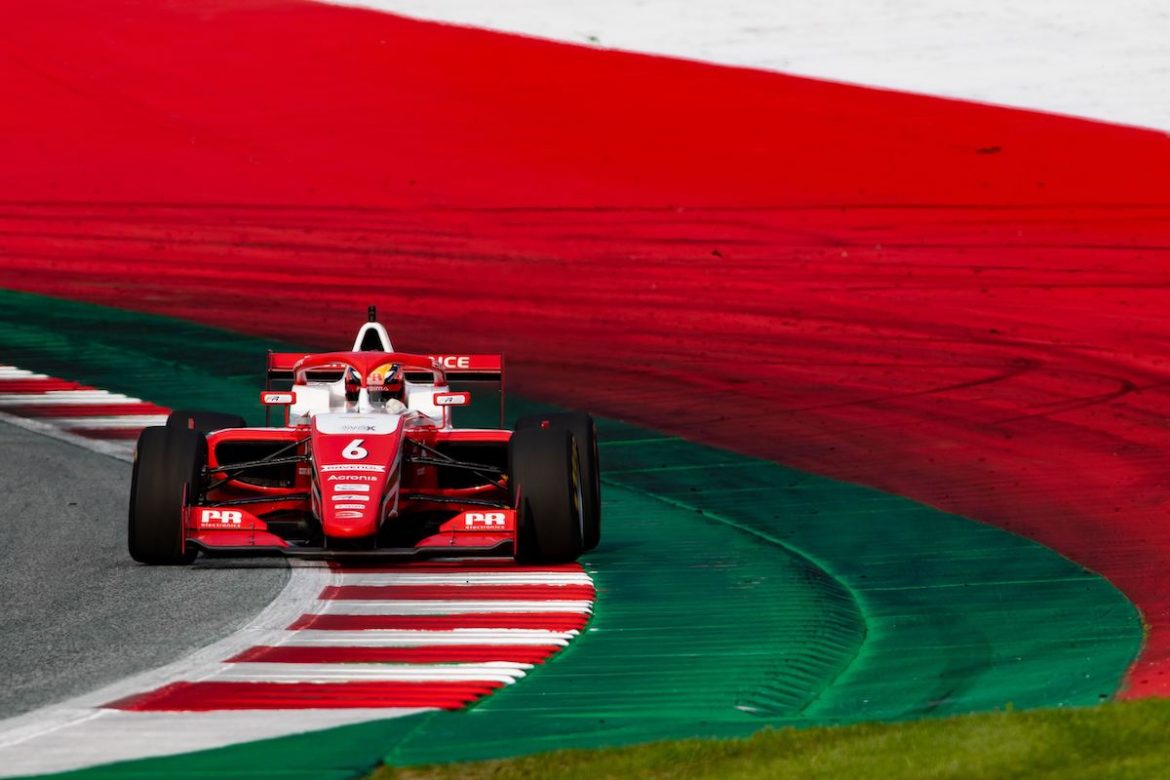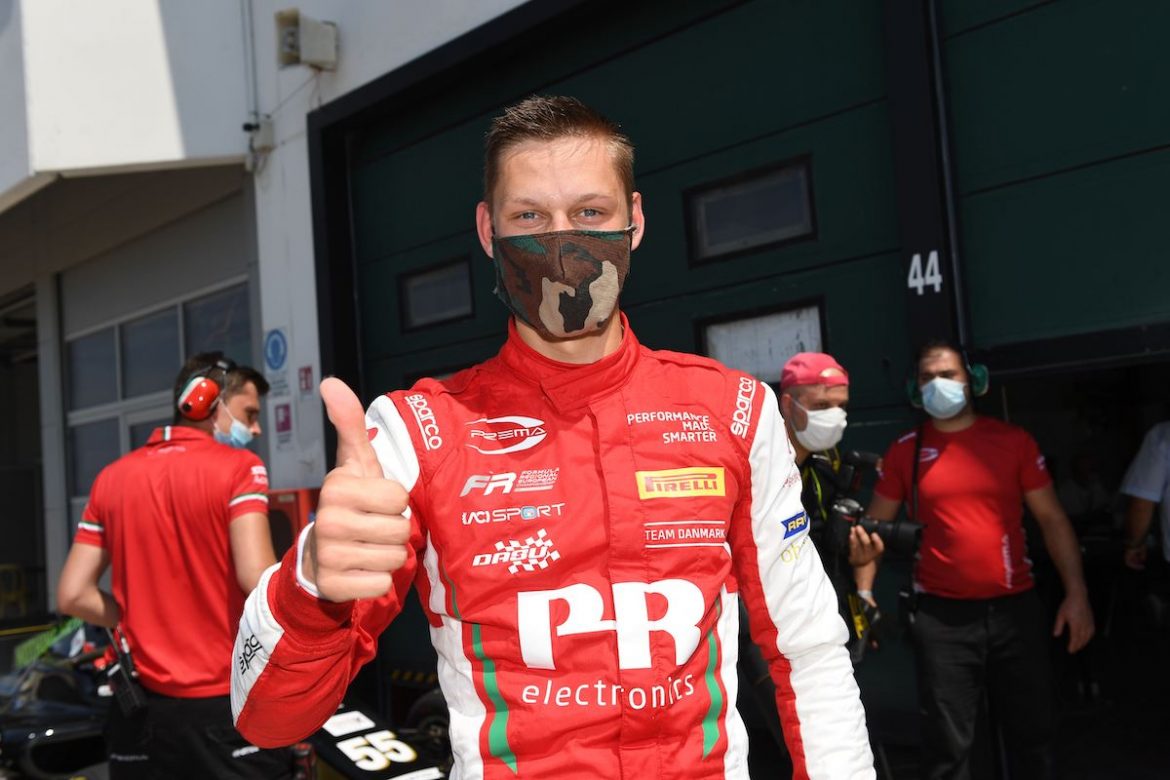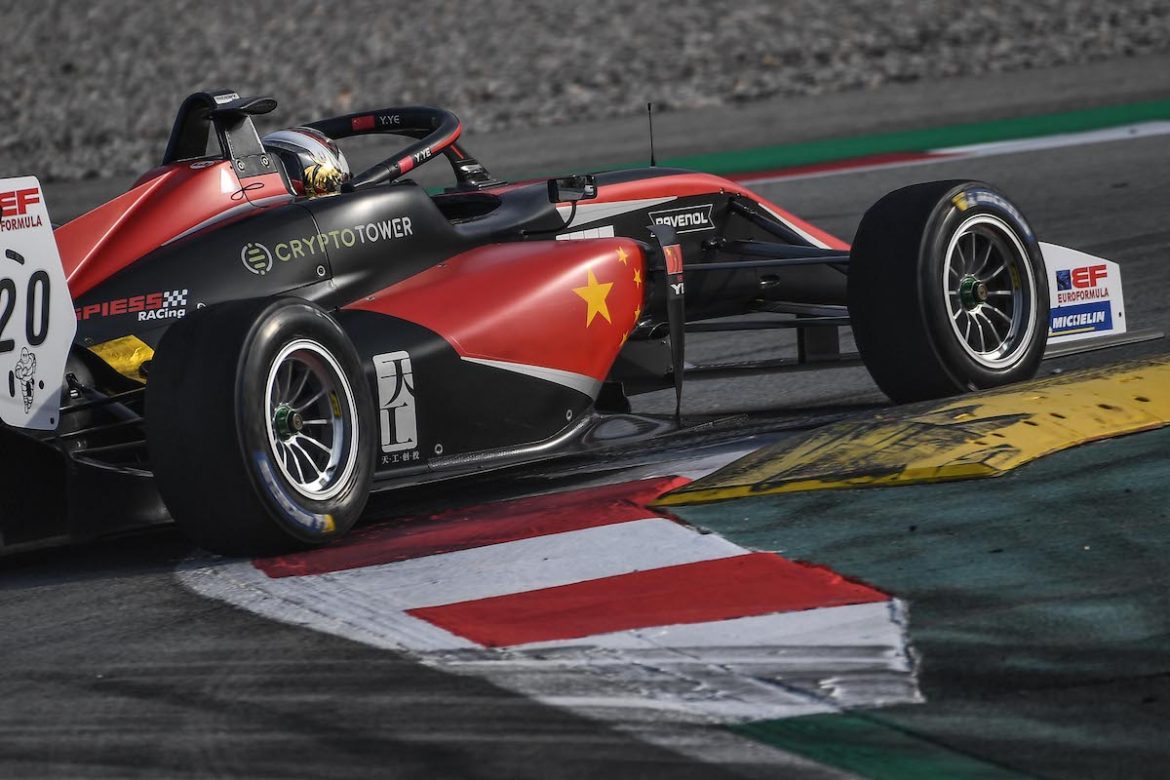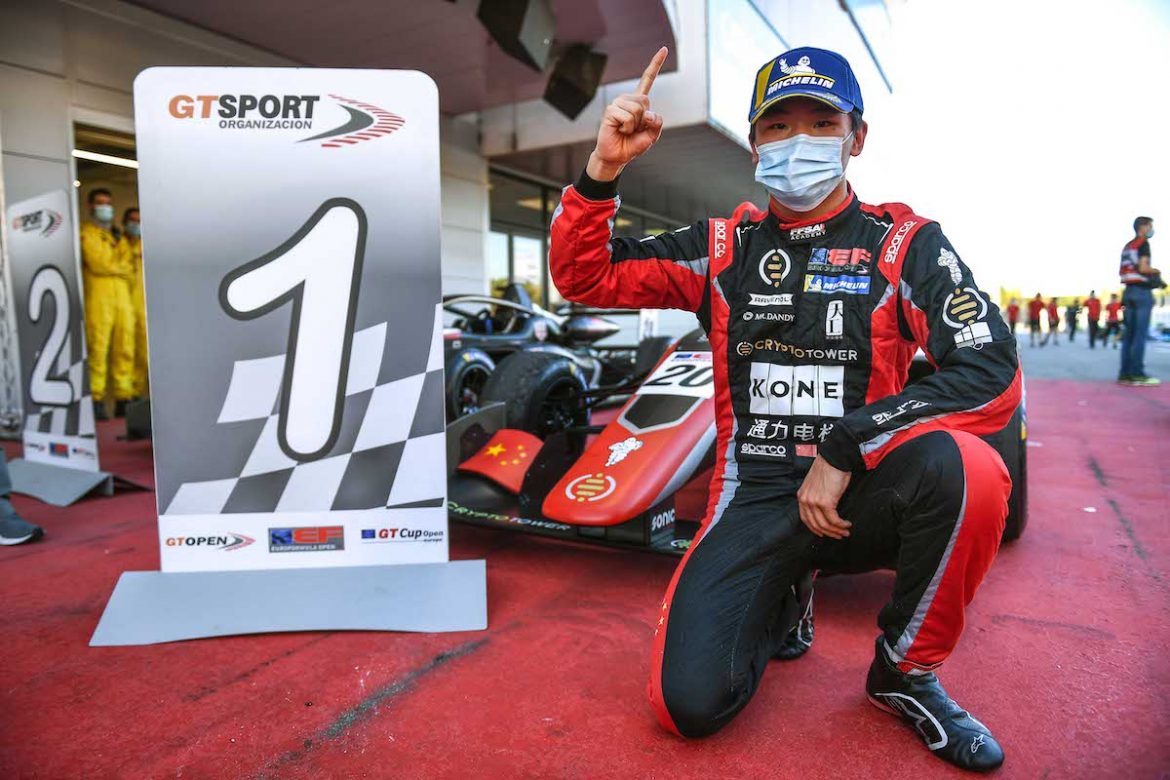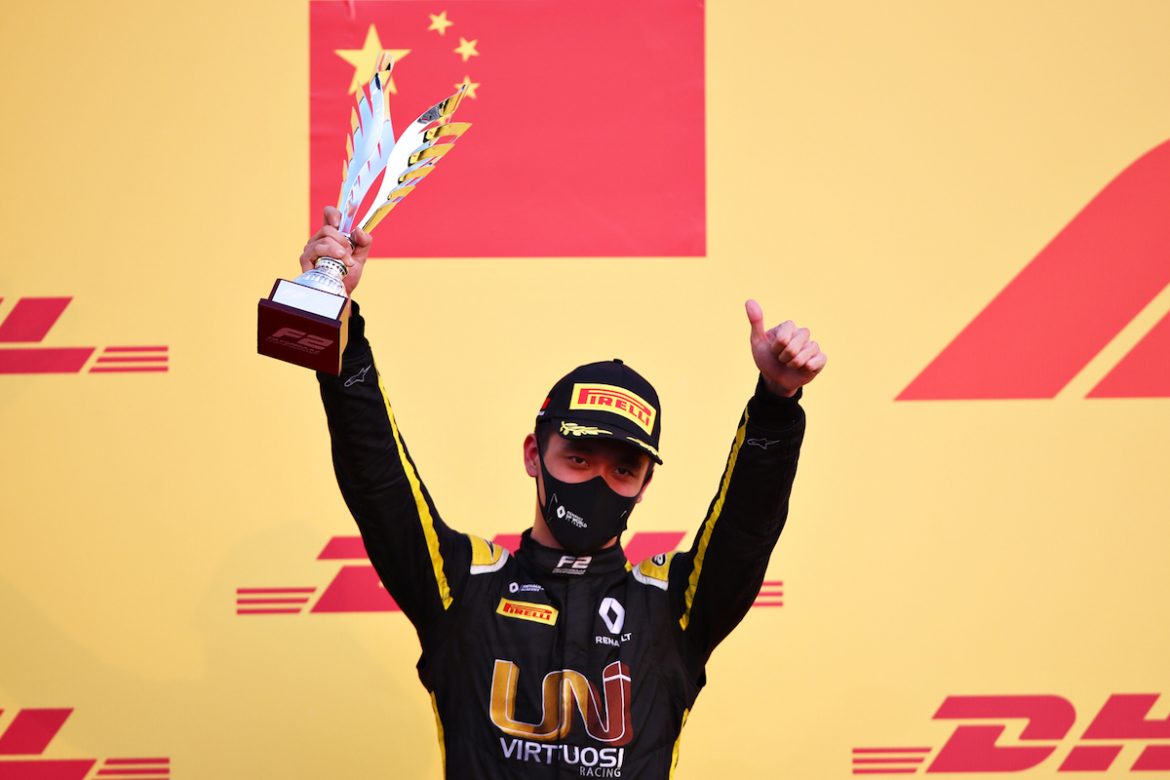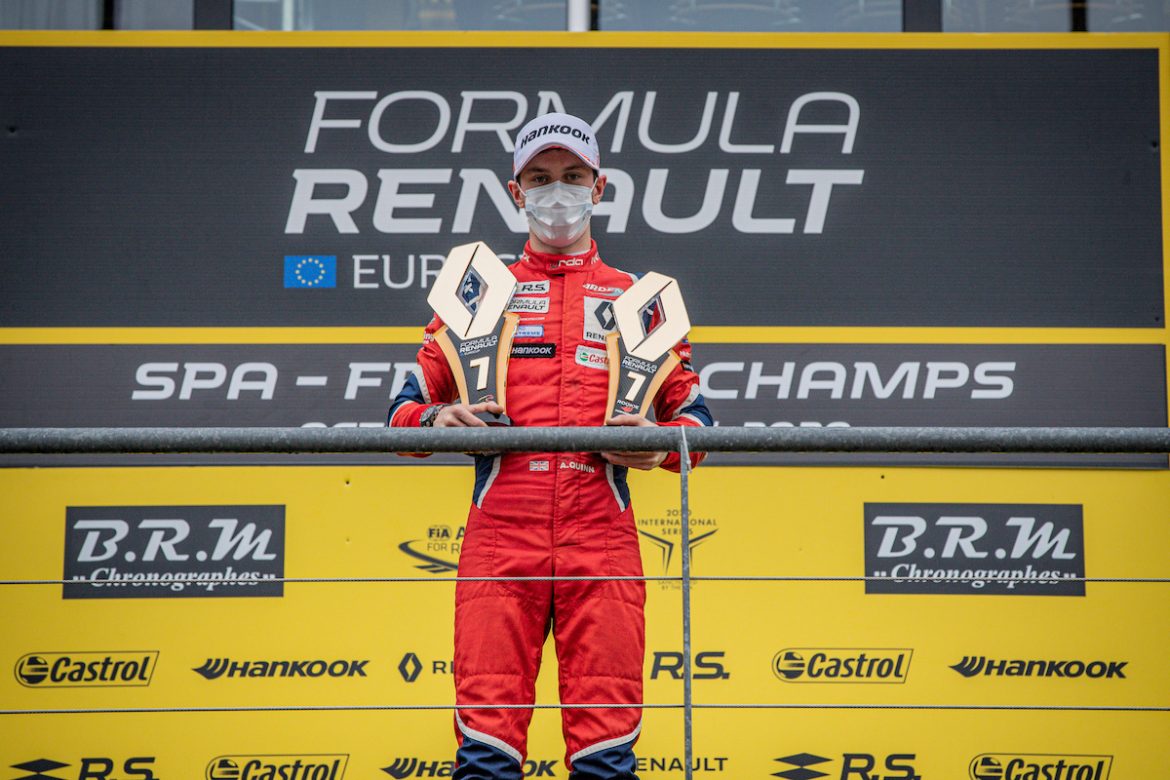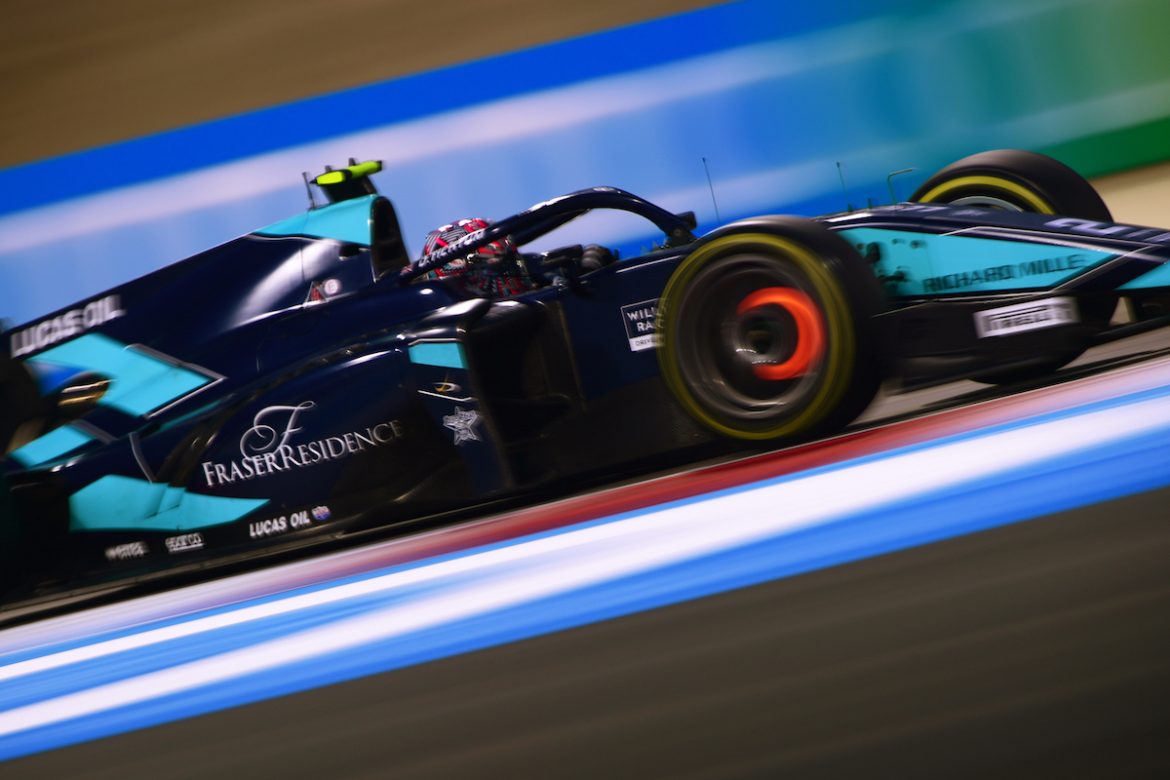We continue to chart the year’s best junior single-seater drivers in part three of the Top 50
30. Francesco Pizzi
New entry • Single-seater rookie won UAE F4 title and fought for Italian crown
Despite Pizzi’s claim it took some time for him to rid himself of the habits of driving a kart rather than a car, the Italian actually had one of the best starts to a single-seater career in modern history with four wins from his first four races.
That was admittedly in Formula 4 United Arab Emirates, where the competition wasn’t massively challenging, but it meant he already had eight wins, three poles and a title under his belt before joining Van Amersfoort Racing for Italian F4.
While it was tempting to say Pizzi could fight for the title in his first season, his qualifying form just wasn’t strong enough for him to stay with Prema’s Gabriele Mini in the points battle. That linked back to the kart driving traits, but also that with over 30 cars on the grid it was usually difficult to get a clear lap anyway in qualifying.
He started the season with a win early on and the points lead, but that qualifying form bit him mid-season and although he claimed a double win at Monza it already looked like the title was out of grasp. Pizzi established himself as one of the series’ best though with strong racecraft, and he did a decent job in his ADAC F4 appearances too. Mid-season he also starred in Regional Formula 3 tests, and could well be a rookie sensation again next year when he steps up a category.
Further reading
The Italian talents fighting over their home F4 title
29. Juri Vips
Down 26 • Made a good impression with F2 cameo in a disrupted year
Sticking brakes at arguably an under-resourced team almost made an embarrassment of Vips’ return to F3 in Formula Regional European Championship, but to be fighting for podiums more often than not against the early might of Prema showed his class. Not that he was happy with any of it.
Almost as soon as that brake issue was sorted he was called up by DAMS to debut in Formula 2 – the two events occurred probably an hour apart – and as a result the Estonian’s planned Super Formula programme was put onto a reserve pile that it never left.
Despite his track time being restricted, and his learning process being limited by an absent team-mate, Vips was quick to adapt on his debut weekend at Spa-Francorchamps and came just short of scoring points in his first race from the rear of the grid. He did so again in his next three races, then finally put some points on the board with seventh place at Mugello. That put him towards the front of the grid for the sprint race, and he converted it into a maiden podium.
His qualifying pace wasn’t far off full-time team-mate Dan Ticktum, and he was seventh fastest on average in races. Mick Schumacher was not much quicker and he won the title. If Vips had done the whole season, he may have been a regular win threat, and obviously there’s the question mark over what he could have done had he actually appeared with Team Mugen in SF rather than staying in junior single-seaters in Europe.
Further reading
The timeline of Juri Vips’ F1 superlicence quest
28. Oliver Rasmussen
New entry • Threatened his Ferrari-supported team-mates in FREC
In a championship dominated by Prema, Rasmussen wasn’t expected to challenge his team-mates Gianluca Petecof and Arthur Leclerc for the Formula Regional European title. After all, he hadn’t looked to be on their level when they were all racing in F4 in 2019. But challenge is what he did – ultimately matching Leclerc’s haul of six wins as well as his points tally, and taking two wins more than champion Petecof.
Rasmussen went into the season with the benefit of a Toyota Racing Series campaign in the Tatuus Regional F3 car under his belt, but it was in the second half of the FREC campaign that he really made strides compared to his colleagues.
He did win the season-opening race at Misano, but only after Petecof, Leclerc and Vips all came together on the first lap. Otherwise he looked very much third-best in the early rounds, not even making the podium at his ‘home’ round at Paul Ricard (having been born a bit further along the French Riviera).
There was a second victory at the Red Bull Ring and a first pole at Mugello, but he had no answer to Leclerc’s wet-weather prowess in the race. Yet once Ferrari juniors Petecof and Leclerc stopped winning altogether at the halfway stage, Rasmussen became the form driver in the Prema camp, winning once at Monza and twice at Barcelona. None of his first five victories came from pole position.
He had his share of the late-season mechanical woe too, being denied a pole position start at Imola by a gearbox problem. Given that he lost another chance to start from the front to the weather at the Vallelunga finale – where he had claimed a treble pole – it’s easy to see where Rasmussen could have picked up the extra 17 points that would have made him an unlikely champion.
27. Yifei Ye
Re-entry (21st in ’18) • Won 11 out of 18 races in new car to take Euroformula title
Dominating a series with a new car that is only slower than Formula 2 and FIA F3’s is certainly impressive, and there’s little faulting Ye’s performances this year besides a few questionable defensive manoeuvres, but his opposition simply wasn’t up to scratch much of the time.
Carlin and Drivex School struggled with its cars, leaving Van Amersfoort Racing to take on the might of Motopark and its CryptoTower Racing Team offshoot. The data available across six cars at Motopark sped up its understanding of the Dallara 320 massively. That was an advantage for CryptoTower driver Ye, who raced in FIA F3 last year, and he didn’t have to worry about VAR’s driver line-up too much.
It was therefore best to judge him on how he beat his team-mates, and only one regularly held a candle to Ye: Lukas Dunner.
While 11 wins, 13 qualifying-topping performances and 12 fastest laps for Ye was huge statistically, he was actually almost identically matched to third-year Euroformula racer Dunner when the Austrian was racing (he missed several rounds prioritising a point-less FIA F3 campaign) and got showed up his rival in the wet.
So it wasn’t so much a case of Ye could have done better, as his other four Motopark stablemates rarely got close to rivalling him in races, but that a sample size of just five drivers and that he didn’t bury Dunner into the ground made his dominant run to the title more of an expected success completed rather than an absolutely groundbreaking season-long performance.
Perhaps if the pandemic hadn’t led to the cancellation of the Pau and Mediterranean grands prix then we could have seen Ye really given a challenge to get his teeth into.
Further reading
Euroformula season review: The super-close battle that dominated 2020
26. Guanyu Zhou
Down 17 • Second season in F2 peaked with opening pole position
Much was expected of Zhou in 2020. He was mega in his rookie Formula 2 season, he was with the outfit to beat in Virtuosi, and he even won the inaugural Formula 1 Virtual Grand Prix when the world shut down.
He was leading in the first race of the season in Austria too. Commandingly.
And then he came to a halt. Unfortunately, after that, Zhou’s season just fell a little bit flat as team-mate Callum Ilott romped to devastating pole positions and further victories to add to the one he inherited in Austria.
It wasn’t too long after Austria that any realistic chance of F1 promotion for ’21 entirely went out the window as the Renault-backed driver was snubbed in favour of Fernando Alonso.
Spinning away podium places, sometimes being several tenths behind Ilott in qualifying and some disastrous luck meant Zhou could only watch the title slip away from him too while being usurped by rookies in the same manner he brilliantly did in 2019.
He showed some strong racecraft at times, often late in races on fresher rubber. He finally took that elusive win in an abandoned sprint race at Sochi, but some of his drives in Bahrain to conclude the season were arguably better. He snuck back into the top half-dozen in the points by the end of a season that promised so much but didn’t have all of the ingredients required to deliver the title. Next year will be crunch time…
25. Alex Quinn
New entry • Took fourth in Eurocup and rookie crown after late call-up
Short of funding since the Racing Steps Foundation came to an end four years ago, Quinn already shone in the Formula Renault Eurocup in 2019 when he took two podiums from six races as a substitute for Arden.
Looking to turn that promise into a full-time drive in 2020, he tested with MP Motorsport in over the winter before a race seat then came up at Arden on the eve of the opening round when Jackson Walls didn’t make it over from Australia amid the coronavirus pandemic.
Once more, Quinn quickly made his mark, taking pole position for the first race at Monza, which he finished in second place behind fellow late signing Franco Colapinto. Another podium came a few weeks later at Imola.
While his form dipped along with the team’s over some of the following rounds, he came on strongly again in the four back-to-back weekends that ended the season – most notably taking a comfortable win at Spa from 12th on the grid when he correctly started on wet tyres.
He was never outside the top five in the six races after that, allowing him to overhaul David Vidales for the rookie title. Unsurprisingly, Arden appears keen to keep him around for the newly-merged FREC in 2021.
24. David Beckmann
Re-entry (19th in ’18) • Maintained FIA F3 title bid with consistent campaign
Beckmann scored points in 16 out of 18 races in an FIA Formula 3 campaign he only signed up to two weeks before the season-opener at the Red Bull Ring.
After enduring a miserable 2019 with ART Grand Prix, he immediately looked back ‘at home’ with Trident, earning back-to-back podiums at the second round and following this up with successive reversed-grid victories at Budapest and Silverstone.
At the Hungaroring, two five-second penalties for MP Motorsport’s Bent Viscaal handed him the win, before Alexander Smolyar’s aggressive defence at Silverstone earned a penalty and gave him another victory. This meant Beckmann picked up both of his wins by finishing second on the road.
Still, his supreme consistency – and good fortune – meant he was still an outside championship contender as the field arrived at Mugello.
Although he finished ahead of his Trident team-mate Lirim Zendeli in the drivers’ championship, he was marginally slower in both qualifying and the races, with Zendeli taking two poles and a Saturday victory – two things which eluded Beckmann. What hopefully won’t elude him is a deserved move up to F2, where he’s tested with Charouz.
23. Lirim Zendeli
Re-entry (29th in ’18) • Claimed two FIA F3 poles and a Saturday win at Spa
Zendeli struggled to match the consistency of his Trident team-mate, but his peaks were higher. He started his FIA F3 season by qualifying on the front row at the Red Bull Ring and he just about managed to survive the first corner melee with Oscar Piastri and Sebastian Fernandez to bag the first of two fifth-place finishes.
He took second place at the same circuit one week later in horrendous conditions before a couple of disappointing rounds. The second Silverstone round should have yielded his first race win, but he was outclassed by Viscaal in a race-long duel.
His pace across the final triple-header was impressive, and he started that run by becoming the third Trident driver to win the race one at Spa in as many years after taking his maiden pole. He went on to qualify second at Monza and took pole for the finale at Mugello, leaving him with one of the best qualifying averages in the field (discounting his 25th at the Hungaroring).
He failed to stand on the podium in either weekend but he did bag crucial points that allowed Trident to claim second place in the teams’ championship ahead of an ART Grand Prix squad that had previously beaten it to so many GP3 titles.
Zendeli, who began his year by finishing eighth in the Toyota Racing Series, has secured a well-earned promotion to Formula 2 with MP Motorsport next year. Considering the job Felipe Drugovich has been able to do with that machinery this year, Zendeli can expect good things from his maiden F2 campaign.
22. Dan Ticktum
Re-entry (4th in ’18) • Strong pace as F2 rookie brought success on Sundays
Pressing the radio button aside, this was a Ticktum that was circumspect against people’s expectations and once again usually showed brilliant racecraft on track. However he had one weakness which, once examined, made it clear where his results could have been stronger in his rookie F2 season.
An inability to get the 18-inch Pirelli tyres into the optimum temperature window wasn’t an issue unique to Ticktum, but neither was it a universal one across the grid as some teams and drivers found a solution to be at the front. So it was only on certain tracks that Ticktum was a podium contender.
He made the most of that to take wins at Silverstone and Monza, although the latter was taken away by a spec component failure, and twice made the podium at the Red Bull Ring. Going beyond those headline results, and he was actually one of the quickest in races. After losing time in the early laps with tyres still not up to temperature, he would then be bang on the pace for the remainder and across the season he was pretty much second best on stint-long race pace.
The only time that wasn’t really the case was the second Silverstone round, where after being passed by Louis Deletraz (and complaining on the radio) he got frustrated and worked his tyres too hard to eventually slump to 15th place.
At this point he was still the standout driver for scoring points in sprint races, and he would have had the fourth highest tally by the end of the season (and made the top 10 in the standings) were it not for his Monza disqualification. An expected move to Carlin for 2021 should cure some of his woes, and he knows exactly what he needs to change to be a title-winner.
Further reading
Why the Dan Ticktum conundrum isn’t what you expect
21. Arthur Leclerc
New entry • Unlucky not to win Formula Regional Europe as new Ferrari junior
After showing promise in the French and German F4 series following a late start in cars, the younger Leclerc got a big chance to shine in 2020 when he joined the Ferrari Driver Academy and took up a place in Prema’s Formula Regional Europe line-up.
In the end, he missed out on the title to team-mate and FDA stable-mate Gianluca Petecof, but there was very little to separate the two drivers. If anything, Leclerc had the greater peaks, but inconsistency cost him from the first race to the last.
His greatest peak of all was his hat-trick of wins at Mugello, which included some incredible wet-weather driving that demonstrated his natural skill. It put him on top of the championship by eight points over Petecof at the halfway point.
Given that Petecof hardly looked capable over the rest of the season of winning again, it’s hard to fathom quite how Leclerc didn’t end up as champion. He took two further pole positions at Monza and Imola but both of these were squandered, fading to sixth at the former and suffering a technical failure while leading at the latter. He was just two points behind Petecof going into the final round, only for an engine fire to consign him to the back of the grid. It was still there for the taking until his own mistake caused a third retirement of the season in the final race.
His season might have ended in disappointment but Leclerc can look forward to a Prema seat in FIA F3 next year and an even greater chance to prove he’s more than just Charles’ little brother.
Further reading
Inside the F3 title fight belonging to Ferrari’s F1 juniors
The Formula Scout Top 50 Drivers of 2020 has been compiled by Bethonie Waring, Craig Woollard, Elliot Wood, Josh Suttill and Peter Allen. Click here to view the rest of the list.
